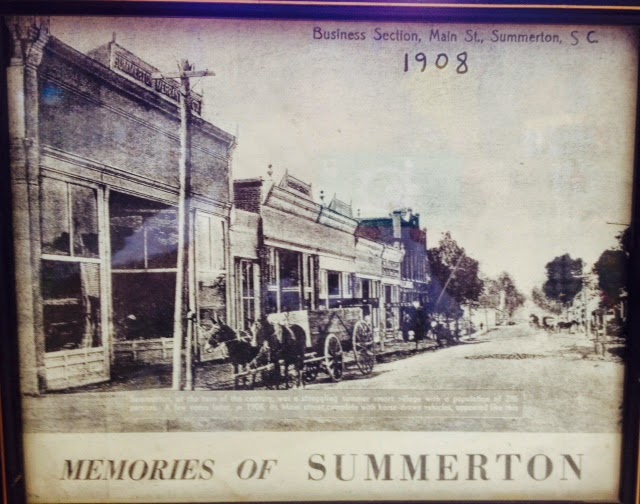The
following are some of the key historic events that occurred in, or
had an impact on, Summerton, S.C. during the 1900's:
- In 1902, electricity came to Clarendon county. This was followed in 1911 by the introduction of telephone service.
- Tom Johnson wrote "Fragments of Fallen Flags: Railroads of Clarendon County, S.C. 1886-1940". These included the Alcolu Railroad, Paroda Railroad, and the Wilson & Summerton Railroad. The line served as a link between the Atlantic Coast Line Railroad and the Central Railroad of South Carolina.
- With the passage of the Nineteenth Amendment to the U.S. Constitution in 1920, women across the U.S. finally obtained the right to vote in elections. It was the culmination of the women's suffrage movement in the U.S., which fought for decades to achieve the right to vote. However, several more decades passed before South Carolina finally ratified the Amendment.
- In 1926, a fire nearly destroyed the entire business district on Main Street in Summerton.
- In the 1930's, the Great Depression affected everyone in Summerton. The only bank in town, the Bank of Summerton, closed its doors in 1932 leaving nearly everyone destitute.
- The 1930 census gives us a view of the living conditions in Clarendon County. Of the 4,256 farms in the county, only 978 reported having automobiles and only 46 (about 1.1%) had electricity. Telephones were found in 72 farms and 96 had piped water into their houses.
- In 1939, the Bank of Clarendon was officially chartered by the state of South Carolina. Prior to this, during the 'Great Depression', it was known as the Clarendon Cash Depository.
- In November 1941, Lake Marion was created by the construction of the Santee Dam. The dam was built across the Santee River to supply hydroelectric power, as part of the rural electrification efforts initiated under President Franklin D. Roosevelt's New Deal during the Great Depression.
- Lake Marion and the Santee Dam were part of the Santee Cooper Hydroelectric and Navigation Project. This project also included the construction of the Pinopolis Dam (also known as the Cooper River Dam) which created Lake Moultrie. It also consisted of a diversion canal seven and a half miles long that connected the two lakes.
- In 1951, the African American community in Summerton joined NAACP efforts to file a class action suit, Briggs vs. Elliott, in U.S. District Court. They sued the local school board over the issue of unequal education opportunities being provided for their children. It was ultimately combined with four other desegregation cases, collectively known as Brown v. Board of Education, and brought before the U.S. Supreme Court. This resulted in the 1954 landmark decision desegregating public schools across the U.S. - see Brown vs. Board of Education.
- In 1964, the Civil Rights Act was passed by Congress officially ending racial segregation across the U.S.
- In 1965, integration of a few token black students into formerly all-white Clarendon county schools began.
- In 1970, after the U.S. Court of Appeals for the Fourth Circuit mandated complete desegregation, many white students were enrolled by their parents in private, all-white academies. Many of these schools have since closed.
- In 1973, the Clarendon County Area Vocational Center was built. In 2003, the facility was renovated and substantially expanded and was officially renamed the F.E. DuBose Campus of Central Carolina Technical College.
- In 1979, the annual weeklong Annual Striped Bass Festival was started in Clarendon county. The county is home to the first population of landlocked striped bass in the U.S.
- In 1989, Hurricane
Hugo hit South Carolina wreaked tremendous havoc across the
state, including
Clarendon county and many communities surrounding Lake Marion.
Learn more about the history of the town of Summerton in Clarendon County, S.C., its people, places, battles, and much more by visiting the Historic Summerton S.C. web site. Send us information on any major events we may have not included.

No comments:
Post a Comment